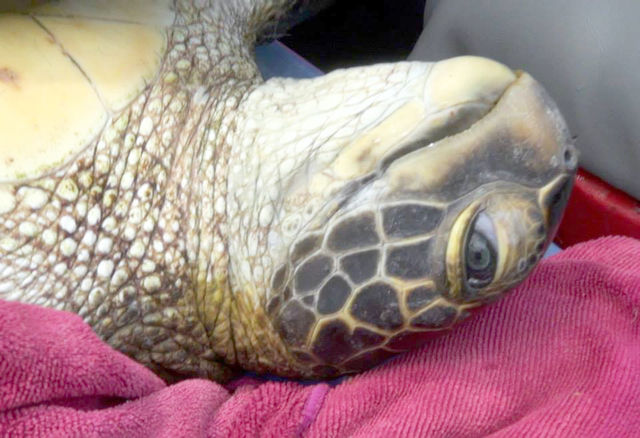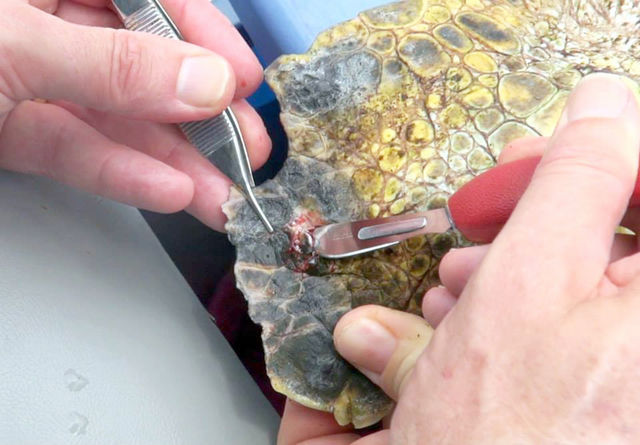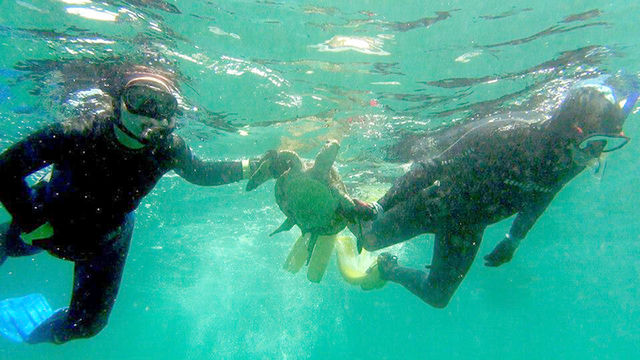LIHUE — A local marine biologist’s documentation of green sea turtles with torn and tattered flippers prompted state and federal scientists to gather on the North Shore this week to take a closer look. The team examined about 30 turtles
LIHUE — A local marine biologist’s documentation of green sea turtles with torn and tattered flippers prompted state and federal scientists to gather on the North Shore this week to take a closer look.
The team examined about 30 turtles in near shore waters Tuesday and Wednesday, said Thierry Work, a U.S. Geological Survey wildlife disease specialist. But none of them had the kind of alarming flipper damage seen in photos taken by Hanalei marine biologist Terry Lilly.
“The main objective was to rule in or out the possibility that it’s an infectious disease,” Work said. “We don’t know what the cause of those flipper lesions are. Maybe it’s some kind of traumatic episode.”
Unable to find any turtles like the ones seen in Lilly’s photos, however, Work said the answer remains elusive.
“I’ve seen things similar in captive turtles that are really crowded,” Work said. “They will start biting each other sometimes. But I’ve never seen it in wild turtles.”
A blood sample and skin biopsy were taken from a turtle the scientists came across that had a small lesion on its rear flipper, Work said. The results of those tests will be publicly available in about two weeks.
“It was the only one we saw that had anything on any of the flippers, but it doesn’t seem to be the same thing (Lilly’s) been seeing,” Work said.
Lilley said one turtle had damage to its shell and flippers.
“We all gently brought it to my research zodiac and did blood test and a biopsy. This info can help us understand what is going on with the health of the turtles and reef,” he wrote. “The crew took extreme care to make sure the turtle had the least amount of stress as possible and we let it go quickly after its ordeal. I think this poor turtle thought it had been abducted by some creatures from Mars but she came to us for a purpose and we may be able to help her by doing these important lab studies.”
Also involved in the two-day research trip were George Balazs, a zoologist for the National Oceanic and Atmospheric Administration’s turtle research program, and Don Heacock, Kauai District fisheries biologist for Department of Land and Natural Resources.
It hasn’t been determined whether the group will return to Kauai’s North Shore waters for more testing.
“The problem is it’s one of those things where you have to be in the right place at the right time,” Work said. “We did see a bunch of turtles and the ones we saw looked good. No tumors. They looked healthy.”




